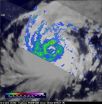INFORMATION:
For more information and a list of authors, see the table of contents and abstracts.
LGBT bioethics: Visibility, disparities, and dialogue
The time is now for bioethics to help redress injustices and inequities that lesbian, gay, bisexual, and transgender individuals face, say leaders in health care, law, and LGBT issues.
2014-10-03
(Press-News.org) Despite the legalization of same-sex marriage in 19 states and the District of Columbia and an executive order to prohibit federal contractors from discrimination against lesbian, gay, bisexual, and transgender employees, LGBT individuals face tremendous hurdles in access to health care and basic human rights. A special report published by The Hastings Center, LGBT Bioethics: Visibility, Disparities, and Dialogue, is a call to action for the bioethics field to help right the wrongs in the ways that law, medicine, and society have treated LGBT people.
The editors are Tia Powell, founder and director of the Einstein-Cardozo Masters of Science in Bioethics program and director of the Center for Bioethics at Montefiore Medical Center and Albert Einstein College of Medicine in the Bronx, and Mary Beth Foglia, an affiliate faculty member in bioethics and humanities at the University of Washington and a health care ethicist with the Department of Veterans Affairs.
The contributors include award-winning author Andrew Solomon and leaders in health care, law, and ethics. One writer, Jamie Lindemann Nelson, is a transgender bioethicist who explores the role of science in the search for identity by transgender people.
In their introduction, Powell and Foglia outline the singular role that bioethics can play in ongoing efforts to ameliorate the injustices that LGBT people experience. They recognize the ways in which bioethics has helped other vulnerable populations: effecting policies to reduce abuses of research participants and helping to establish the ethical and legal framework concerning end-of-life care. "However, bioethics has only rarely examined the ways in which law and medicine have defined, regulated, and often oppressed sexual minorities," they write. "This is an error on the part of bioethics."
Several commentaries focus on specific populations: children and adolescents, LGBT seniors, LGBT veterans, and LGBT patients in the public safety net.
Two articles critically examine the belief that sexual orientation is biologically determined. Andrew Solomon cautions that findings about the origins of any stigmatized condition, such as a disability, have been used "to erase it, by either treating it or taking measures to prevent it." He looks to bioethicists to consider the implications for "LGBTQ" individuals – including the possibility of "extirpating a community and an identity" – and to "help build a social consensus as to how and whether such potential knowledge should be exploited and by whom."
Another article questions the scientific basis for "born that way" assertions and argues that "claims about innateness, immutability, and lack of choice about sexual orientation should not be the primary basis for LGB rights." The authors, Tia Powell and Edward Stein, professor of law and the director of the Gertrud Mainzer Program in Family, Law, Policy, and Bioethics at Cardozo School of Law in New York, write that "thoughtful and respectful analysis of the development of crucial aspects of human identity, including the development of full variety of sexual orientations, is a better route toward understanding and civil rights."
In releasing this report, Hastings Center President Mildred Solomon calls on the scholarly bioethics community to do much more to rally health care leaders and policy makers to ensure the human rights of LGBT persons. "This set of essays breaks new ground in articulating the reasons why LGBT persons must be respected – not because they are "born that way" but because they have inherent worth," she says. "We must respect individuals' rights to live authentically. The ideas in this publication are a virtual call to arms to the bioethics and health care communities."
ELSE PRESS RELEASES FROM THIS DATE:
New study finds lack of adherence to safe handling guidelines for administration of antineoplastic drugs
2014-10-03
FALLS CHURCH, Va. (October 3, 2014) — A new National Institute for Occupational Safety and Health (NIOSH) study, published online in the Journal of Occupational and Environmental Hygiene, found that recommended safe handling practices for workers who administer antineoplastic drugs in healthcare settings are not always followed.
Results are derived from the 2011 Health and Safety Practices Survey of Healthcare Workers, the largest federally-sponsored survey of healthcare workers in the U.S., which addresses safety and health practices relative to use of hazardous chemicals. ...
Alcohol consumption associated with increased risk of HPV infection in men, say Moffitt researchers
2014-10-03
Men who consume more alcohol have a greater risk of human papillomavirus (HPV) infection, according to a recent study by Moffitt Cancer Center researchers.
HPV is a common sexually transmitted virus, with more than six million new infections in the United States each year. HPV causes genital warts in both men and women and is a contributing factor to a number of different cancers in women, including cervical, vaginal and anal cancers. More recent studies have shown that HPV can also cause penile, anal and oropharyngeal cancer in men. However, there is limited data regarding ...
NASA's SDO watches giant filament on the sun
2014-10-03
A snaking, extended filament of solar material currently lies on the front of the sun-- some 1 million miles across from end to end. Filaments are clouds of solar material suspended above the sun by powerful magnetic forces. Though notoriously unstable, filaments can last for days or even weeks.
NASA's Solar Dynamics Observatory, or SDO, which watches the sun 24 hours a day, has observed this gigantic filament for several days as it rotated around with the sun. If straightened out, the filament would reach almost across the whole sun, about 1 million miles or 100 times ...
Study questions the prescription for drug resistance
2014-10-03
In response to the rise of drug-resistant pathogens, doctors are routinely cautioned against overprescribing antimicrobials. But when a patient has a confirmed bacterial infection, the advice is to treat aggressively to quash the infection before the bacteria can develop resistance.
A new study questions the accepted wisdom that aggressive treatment with high drug dosages and long durations is always the best way to stem the emergence and spread of resistant pathogens. The review of nearly 70 studies of antimicrobial resistance, which was authored by researchers at Princeton ...
Two NASA satellites stare at Typhoon Phanfone's large eye
2014-10-03
Two NASA satellites captured data on Typhoon Phanfone as it continues to strengthen as it moves through the Northwestern Pacific Ocean.
The Tropical Rainfall Measuring Mission or TRMM satellite flew over Typhoon Phanfone on Oct. 2, 2014 at 0939 UTC (5:39 a.m. EDT). The rainfall pattern observed using TRMM's Microwave Imager (TMI) and Precipitation Radar (PR) data showed that Phanfone was much better organized than a day earlier. This precipitation analysis revealed that intensifying typhoon Phanfone had formed a large eye. The heaviest rainfall was shown falling at a ...
NASA's Terra satellite sees birth of Tropical Storm Vongfong in Western Pacific
2014-10-03
NASA's Terra satellite spotted the birth of Tropical Storm Vongfong in the Northwestern Pacific Ocean on Oct. 3. Vongfong is the nineteenth tropical storm of the Northwestern Pacific typhoon season.
The MODIS or Moderate Resolution Imaging Spectroradiometer instrument that flies aboard NASA's Terra satellite captured a visible image of Tropical Storm Vongfong on Oct. 3 at 00:30 UTC (Oct. 2 at 8:30 p.m. EDT). At the time of the image, the center of Tropical Storm Vongfong was located just to the northeast of Pohnpei, one of four states in the Federated States of Micronesia. ...
Satellite sees Tropical Storm Simon crawling up Western Mexico's coastline
2014-10-03
Tropical Storm Simon is following the path of several other tropical storms that formed in the Eastern Pacific Ocean by crawling northward along the western coastline of Mexico. NOAA's GOES-West satellite captured an infrared image of Simon on Oct. 3 that showed the eastern side of the storm over Mexico.
An infrared image taken from NOAA's GOES-West satellite on Oct .3 at 7:45 a.m. EDT showed strong thunderstorms circling Tropical Storm Simon's center and a fragmented band of thunderstorms in Simon's eastern quadrant bringing rainfall to western Mexico. Simon's center ...
Argonne researchers create more accurate model for greenhouse gases from peatlands
2014-10-03
Scientists at the U.S. Department of Energy's Argonne National Laboratory have created a new model to more accurately describe the greenhouse gases likely to be released from Arctic peatlands as they warm. Their findings, based on modeling how oxygen filters through soil, suggest that previous models probably underestimated methane emissions and overrepresented carbon dioxide emissions from these regions.
Peatlands, common in the Arctic, are wetlands filled with dead and decaying organic matter. They are the result of millions of years of plants dying and breaking down ...
Massachusetts General study suggests neurobiological basis of human-pet relationship
2014-10-03
It has become common for people who have pets to refer to themselves as "pet parents," but how closely does the relationship between people and their non-human companions mirror the parent-child relationship? A small study from a group of Massachusetts General Hospital (MGH) researchers makes a contribution to answering this complex question by investigating differences in how important brain structures are activated when women view images of their children and of their own dogs. Their report is being published in the open-access journal PLOS ONE.
"Pets hold a special ...
Stroke researchers explore implications of ipsilateral spatial neglect after stroke
2014-10-03
West Orange, NJ. October 3, 2014. Stroke researchers have confirmed that damage to the right frontal-subcortical network may cause ipsilateral spatial neglect. Among individuals with ipsilateral neglect, a much greater proportion had frontal subcortical damage than anticipated by the investigators – 83% vs the expected 27%. A difference was also seen in spatial bias, ie, the type of spatial errors among this group tended to be 'where' (perceptual-attentional) rather than 'aiming' (motor-intentional) errors. Ipsilesional Neglect: Behavioral and Anatomical Correlates (doi: ...
LAST 30 PRESS RELEASES:
ETRI develops an automated benchmark for labguage-based task planners
Revolutionizing memory technology: multiferroic nanodots for low-power magnetic storage
Researchers propose groundbreaking framework for future network systems
New favorite—smart electric wheel drive tractor: realizes efficient drive with ingenious structure and intelligent control
Using stem cell-derived heart muscle cells to advance heart regenerative therapy
Damon Runyon Cancer Research Foundation awards Quantitative Biology Fellowships to four cutting-edge scientists
Climb stairs to live longer
Scientists capture X-rays from upward positive lightning
AMS Science Preview: Hawaiian climates; chronic pain; lightning-caused wildfires
Researchers advance detection of gravitational waves to study collisions of neutron stars and black holes
Automated machine learning robot unlocks new potential for genetics research
University of Toronto scientists appointed as GSK chairs will advance drug delivery research and vaccine education tools for healthcare professionals
Air pollution and depression linked with heart disease deaths in middle-aged adults
More efficient molecular motor widens potential applications
Robotic nerve ‘cuffs’ could help treat a range of neurological conditions
Researchers identify targets in the brain to modulate heart rate and treat depressive disorders
Findings of large-scale study on 572 Asian families supports gene-directed management of BRCA1 and BRCA2 gene carriers in Singapore
Many children with symptoms of brain injuries and concussions are missing out on vital checks, national US study finds
Genetic hope in fight against devastating wheat disease
Mutualism, from biology to organic chemistry?
POSTECH Professor Yong-Young Noh resolves two decades of oxide semiconductor challenges, which Is published in prestigious journal Nature
Could fishponds help with Hawaiʻi’s food sustainability?
International network in Asia and Europe to uncover the mysteries of marine life
Anthropologist documents how women and shepherds historically reduced wildfire risk in Central Italy
Living at higher altitudes in India linked to increased risk of childhood stunting
Scientists discover a new signaling pathway and design a novel drug for liver fibrosis
High-precision blood glucose level prediction achieved by few-molecule reservoir computing
The importance of communicating to the public during a pandemic, and the personal risk it can lead to
Improving health communication to save lives during epidemics
Antimicrobial-resistant hospital infections remain at least 12% above pre-pandemic levels, major US study finds
[Press-News.org] LGBT bioethics: Visibility, disparities, and dialogueThe time is now for bioethics to help redress injustices and inequities that lesbian, gay, bisexual, and transgender individuals face, say leaders in health care, law, and LGBT issues.




